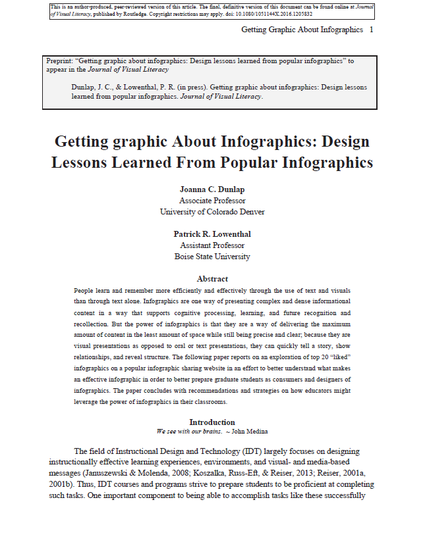
People learn and remember more efficiently and effectively through the use of text and visuals than through text alone. Infographics are one way of presenting complex and dense informational content in a way that supports cognitive processing, learning, and future recognition and recollection. But the power of infographics is that they are a way of delivering the maximum amount of content in the least amount of space while still being precise and clear; because they are visual presentations as opposed to oral or text presentations, they can quickly tell a story, show relationships, and reveal structure. The following paper reports on an exploration of top 20 “liked” infographics on a popular infographic sharing website in an effort to better understand what makes an effective infographic in order to better prepare graduate students as consumers and designers of infographics. The paper concludes with recommendations and strategies on how educators might leverage the power of infographics in their classrooms.
This is an author-produced, peer-reviewed version of this article. The final, definitive version of this document can be found online at Journal of Visual Literacy, published by Routledge. Copyright restrictions may apply. doi: 10.1080/1051144X.2016.1205832
Available at: http://works.bepress.com/patrick_lowenthal/63/
